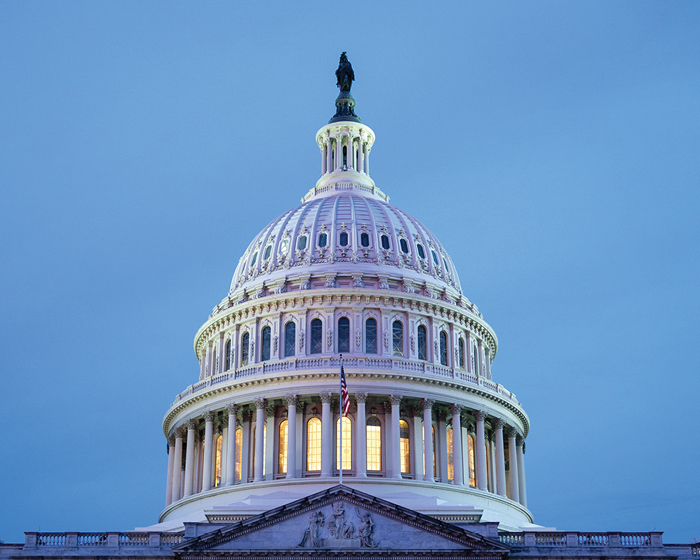Key Takeaways
- Now that the House has acted, lawmakers are waiting for the Senate to take up the reconciliation bill.
- Changes to comply with the "Byrd Rule," which restricts reconciliation to only budgetary items, will likely be a big part of the Senate's work..
- The Byrd Rule has become a crucial arbiter of what can make it through Congress today.
- Washington waits to see how the Trump-Musk feud will affect the tax legislation.
- The SALT cap remains a key sticking point between the House and Senate versions of the tax bill.
Some lawmakers achieve such a legendary status in Congress, their influence and stature continue long after they retire and pass on.
That’s especially true for Sen. Robert Byrd, D-W.V., a lion of the Senate from a different era of politics. (And, a very talented fiddler.) He died in office in 2010, having served as senator for more than 50 years–but one of his biggest legacies has an amazing amount of influence today.

That’s the “Byrd Rule”--the informal name for a process within the Senate’s reconciliation procedure, added by a resolution he sponsored in 1985. Reconciliation had been created a decade earlier to give Congress greater control over federal spending, through a streamlined legislative process that bypasses a Senate filibuster. Lawmakers soon realized they had created a “Pandora’s Box,” as Byrd put it, to pass any kind of bill with only simple majorities in both chambers. The Byrd Rule created a formal process to strike non-budgetary items from a reconciliation bill, as well as other restrictions. It doesn’t allow a reconciliation bill to increase the federal deficit after 10 years of enactment, for instance, and also forbids changes to Social Security.
As filibusters have become a more normalized part of Congress in the years since, reconciliation has become the primary way parties enact their agenda in a closely divided Washington. And the Byrd Rule has become a key gatekeeper, determining what gets in and out.
The Byrd Rule not only determines what provisions get through, but often how those provisions work. As the House of Representatives waits to see how the Senate will revise their recently passed version of the tax bill, changes to adhere to Byrd Rule restrictions are expected to be some of the biggest deviations.
The Byrd Rule is why the tax legislation is happening in the first place, for starters. The 2017 Tax Cuts and Jobs Act included many expirations of key provisions to comply with the Rule’s restriction on long-term deficits.
It’s also why the bill doesn’t include President Trump’s proposal to exempt Social Security benefits from taxation. (Doing so would affect the Social Security trust fund, violating the Byrd Rule’s restriction on any Social Security changes.) Many provisions in the current tax legislation also have expiration dates, due in part to the Byrd Rule.
It’s also reportedly why the legislation doesn’t merely extend current rates, but makes small changes going forward. Its also why, perhaps, a controversial provision to retaliate against “discriminatory” foreign taxes works automatically–although Democrats are hoping to use the Byrd Rule to strike that proposed section down altogether.
Every couple of years, the Senate parliamentarian becomes Washington’s most powerful and beleaguered administrator, making rulings about which policies can be included in landmark legislation. The judgment about what is “budgetary” is often a subjective one. It requires that an item be estimated to increase or decrease federal spending or revenue–but also, that this change is not merely “incidental.”
Once the Senate unveils its version of the reconciliation bill, there will be a chance for any lawmaker to register objections and for the parliamentarian to issue the rulings–what’s known on the Hill as the “Byrd Bath.” But throughout the process, staffers are tweaking and removing items due to Byrd concerns.
One of the Byrd Rule quirks is that a party can even strike down the name of a reconciliation bill. (The 2017 Tax Cuts and Jobs Act’s official title is “an Act to provide for reconciliation pursuant to titles II and V of the concurrent resolution on the budget for fiscal year 2018.”) But since legislation is often named after its key authors, maybe it should be called the Byrd Bill. He likely had a greater hand in shaping it than any living member of Congress.
Recent Tax Pieces:
Trump-Musk Alliance Unravels Over ‘Big Beautiful Bill’ – Ted Mann and Joshua Green, Bloomberg News ($):
The breakup finally arrived this week, an escalating tit-for-tat between the world’s richest man and the president of the US, who spent much of Thursday sniping at one another via social media posts and cameras in the Oval Office.
Senate May Clash With House On SALT Cap, Energy Credits – Asha Glover, Law360 Tax Authority ($):
Dems calibrate their reconciliation messaging – Andrew Desiderio, Punchbowl News:
But some Democrats say that’s not enough. Some argue that the party should be more proactive in telling voters what they’re for, not just policies they oppose, as they try to reconnect with working-class voters who voted for Republicans in the 2024 election.
GOP Whip Emmer weighs in on megabill’s fate — and Musk – Mia McCarthy, Politico:
New Opportunities for Opportunity Zones in the Big Beautiful Bill – Marie Sapirie, Tax Notes ($):
Make a habit of sustained success.



